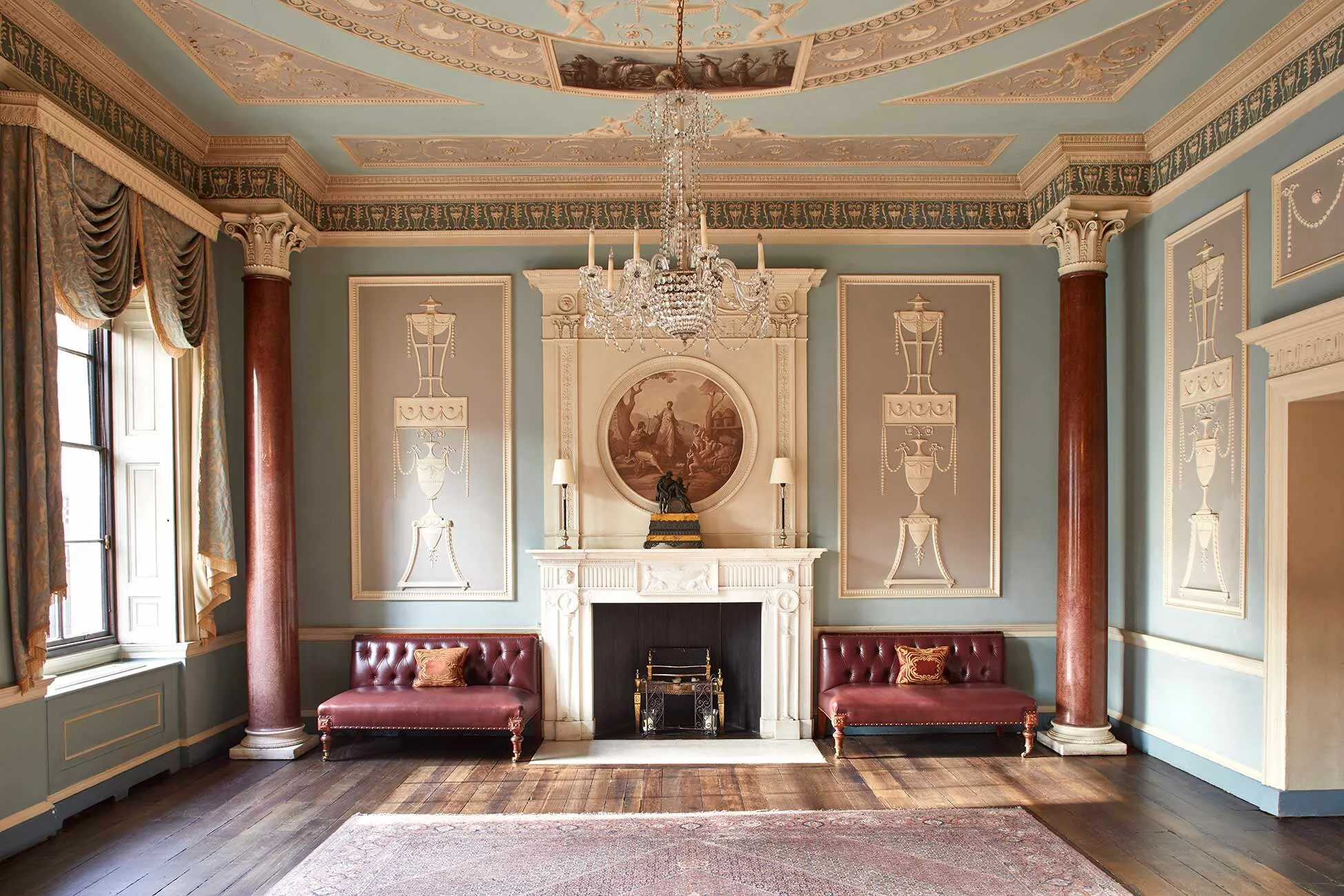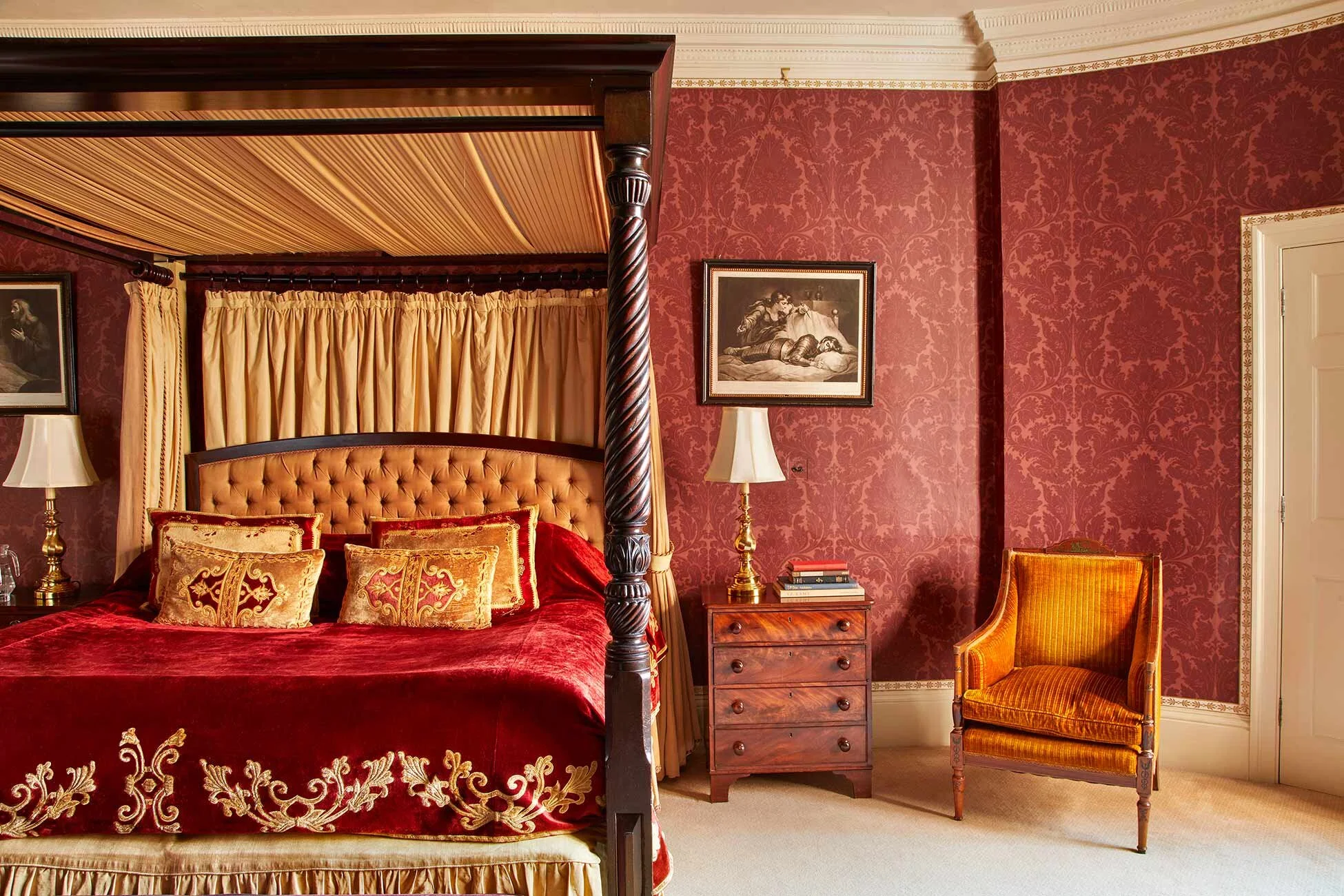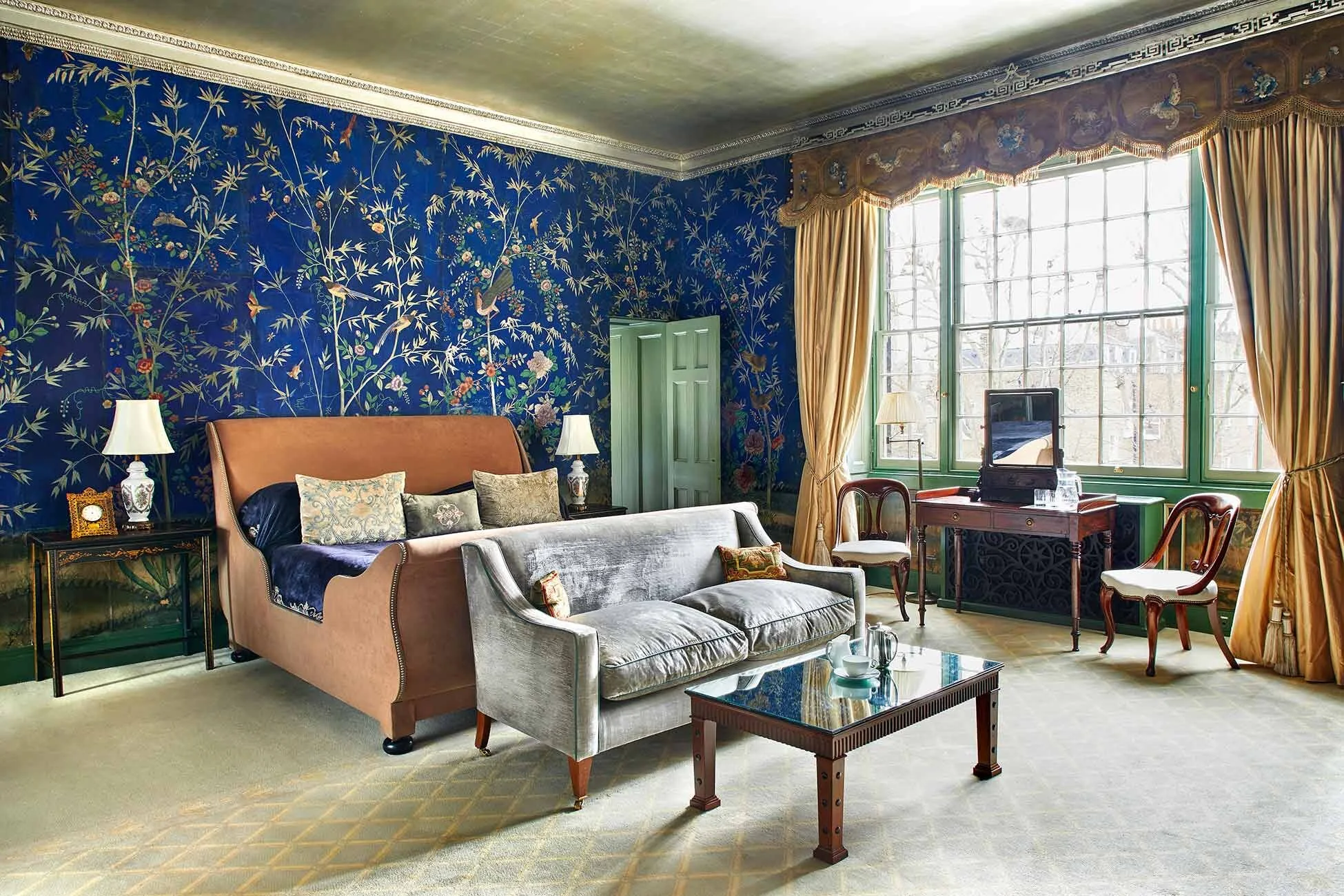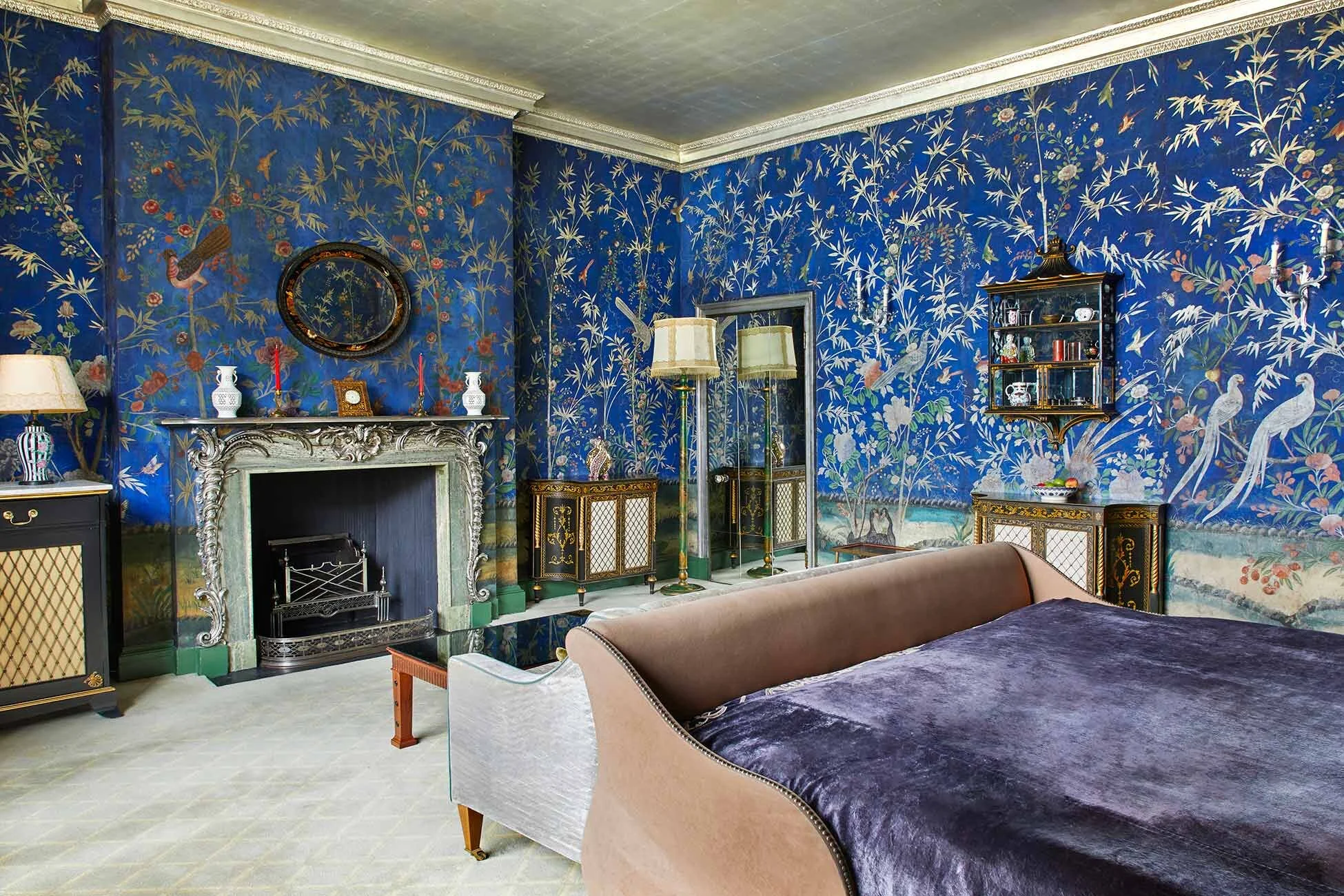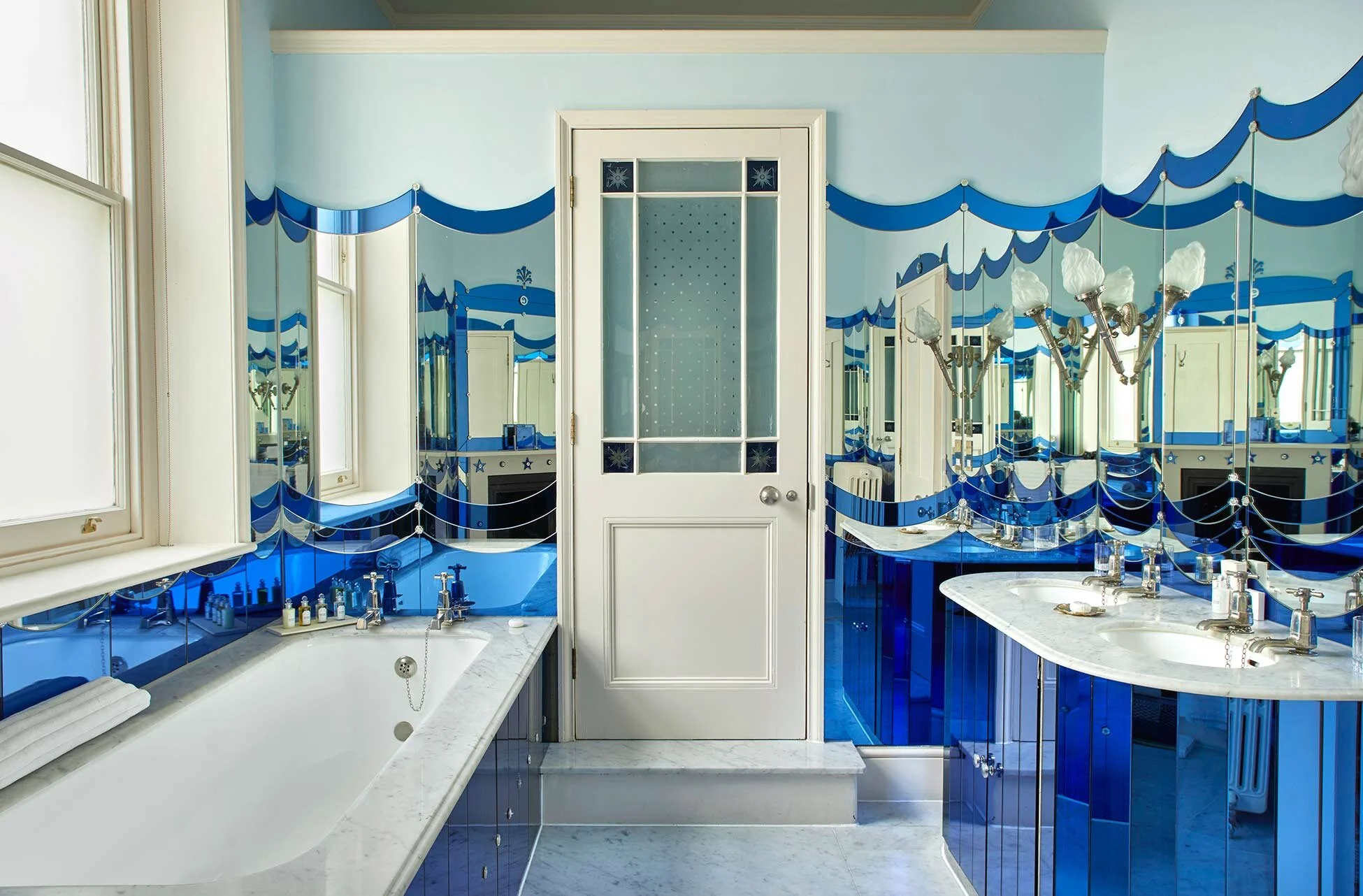London Members' Clubs - Design Focus : Series 3 'Home House'
Home House - Front Parlor - Photography courtesy of Home House
GRAND, ECCENTRIC, ICONIC INTERIOR DESIGN
In our online Journal series celebrating the best Members’ Club and Hotel interior designs in the UK, WOOLF Interior Design & Interior Architecture take our top three favourite Members’ clubs in London and reveal their unique and distinct interior design ingredients.
WOOLF Interior Design & Interior Architecture have design ties to a range of stately homes, Georgian residences and historic public buildings. We are specialist interior designers of period buildings and have an extensive history of curating artwork for residential and commercial interiors. It is from this perspective that Home House, with its blend of period interior design, historic art work and Georgian Architecture, is a particular favourite of WOOLF Interior Design & Interior Architecture.
Looking at Home House from the perspective of an interior design company with studios in historic Bath and in West London, we look at what inspires us in the best of British Hospitality Interior Design from the past and present. In our work we often draw upon historical art and period interior design to inform and inspire our projects. Our studio in Bath is situated in the mecca of Georgian Architecture, which influences us daily with its grace and beauty. Explore WOOLF’s Historic Projects.
Home House - Eating Room - Photography courtesy of Home House
Home House - The design and architecture
Spread across three Georgian townhouses in Marylebone (19, 20 and 21 Portman Square) ‘Home House’ fuses 18th Century opulence with 21st Century design and a quintessentially British sensibility. With exceptional facilities – the Club boasts two restaurants, five bars, lavish party rooms and intimate gardens – it offers Members an unrivalled social calendar packed with endless events and societies, billed as a ‘home from home’, albeit a supremely exclusive one.
In 1773, George III’s architect, James Wyatt, was commissioned by Elizabeth, Countess of Home, to build a sophisticated ‘Pavilion’ designed purely for enjoyment and entertainment at N° 20 Portman Square. The Countess, aptly known as ‘The Queen of Hell’, was in her late 60’s, twice widowed, childless and rich.
In 1775, Wyatt was sacked from the project and his competitor Robert Adam, one of the most celebrated architects of his day, was appointed to complete the interior of the house in the sumptuous Neo-Classical style. N° 20 Portman Square is acknowledged as Robert Adam’s finest surviving London town house. The interior is conceived as a series of grand reception rooms, beginning with a typically austere hall, leading to one of the most breathtaking “tour de forces” in European architecture; Adam’s Imperial staircase, which rises through the entire height of the house to a glass dome, revealing the sky above.
Home House -Reception Room - Photography courtesy of Home House
Marquis de la Luzerne: Home House was also the French Embassy in exile during the Revolution and leased to the Marquis de la Luzerne in the 1790s. A room is named after the diplomat, with wallpaper from an 18th Century silk pattern and a generous half tester bed.
Mr Fredrick's: Mr Fredrick’s is known as the writer’s room, as some of Hollywood’s biggest film scores and scripts were penned here. There must be something about the subtle ruby red and light heritage green décor that creates a restful refuge for the writer in residence for many a night.
Lady Charlotte: The Lady Charlotte features expansive Georgian sash windows, allowing light to flood in. There is a cosy sitting area with a beautiful fireplace, in keeping with the period. Bold vertical stripped wallpaper in shades of gold, ochre and pewter give the room a regal ambience.
George Hanbury: The spacious sitting room in the George Hanbury suite is beautifully furnished in contemporary style with historic touches. Through the folding doors, you enter the stunning bedroom in shades of lime and turquoise, leading to a sizeable and luxurious wooden carved bed.
The Emma Bedroom is decorated in a flourish of Edwardian flower patterns with a grand sweeping sleigh bed, and named after one of Sir Francis Goldsmid’s three daughters who occupied the house.
Photography courtesy of Home House
The Anthony Blunt room features a mahogany bed and large Victorian-style bathroom, with a fabulous double monastery basin in black marble. Rumour abounds that you can still see where MI5 placed listening devices to monitor conversations and garner evidence.
Photography courtesy of Home House
Home House was appointed a Grade I Listed building in 1954
On the ground floor are the Front Parlour and Eating Room, the latter being decorated with symbolic paintings of banquets and the harvest by Zucchi, the husband of artist Angelica Kauffman. On the first floor is a series of ‘Parade Rooms’ featuring the Ante-room, the Music Room, the Great Drawing Room and finally, one of the most original rooms in England, the Countess’s Etruscan State Bedroom, whose pagan decorations derive from the excavations of Pompeii.
From 1932, for almost sixty years, Home House was leased to the Courtauld Institute of Art, whose Director between 1947 and 1974 was the art historian, Master of the Queen’s Pictures and infamous spy, Anthony Blunt. It was in his rooms, on the top floor of the House, that Philby, Burgess and Maclean mingled with academics, politicians and members of the Establishment, whilst a secret listening device was apparently concealed by MI5, in the connecting wall between N° 20 and N° 21 Portman Square. Explore WOOLF’s Historic Projects.
Home House - The Drury Lowe offers cosy seclusion and Dickensian opulence in equal measure. The bedroom has a four-poster maple wood bed edged with chintz, with a bathroom tucked under the staircase of House 19.
Photography courtesy of Home House
Georgian Renaissance, in the heart of Marylebone
From 1989 – 1996, Home House was vacant and included on the World Monuments Watch List of 100 most endangered sites. Rescued by Berkley Adam Ltd in 1996, Home House was meticulously restored to its former glory and opened in its current guise as a private members’ club in 1998. Explore WOOLF’s Historic Projects.
The club was acquired in 2004 by a small group of private investors, Quintillion UK Limited, who later purchased N° 21 Portman Square. The vision was to fuse of the old with the new; merging the grandeur and glamour of the existing buildings at 19 and 20, with the modernity and excitement of the newly refurbished 21. Cutting edge design from Zaha Hadid and polished finishing and detail from Candy and Candy completed the refurbishment in early 2010. The result is an exciting and exclusive Club, rooted in the 18th Century and alive and vibrant in the 21st. The exotic walls of Patricia Portman are decorated with stunning original Chinese Chi’en Lung paper, hand painted in vibrant shades of indigo and coral. This room is designed to impress.
Home House - Patricia Portman Room- Photography courtesy of Home House
Home House - Patricia Portman Room- Photography courtesy of Home House
Home House - Patricia Portman Room- Photography courtesy of Home House
Home House - Art Deco Inspired Bathroom - Photography courtesy of Home House
Today, Home House hosts a collection of characters and individuals, it is an inspiring space where people can connect, relax and be their ‘best selves’. They aim to build communities and inspire individuality. Each of the 23 luxurious bedrooms and suites has a unique story to tell, with interior design features that include hand-painted silk wallpaper and shimmering gold ceilings.
The deep red marble in Lady Islington’s bathroom comes from the same stone as that used in the star inlay in the floor in the center of the dome in St. Paul’s Cathedral, London. A bath made for His Highness Say Aji Rao III, Maharajah Gaekwad of Baroda (1863-1939) is now in the Duke of Atholl’s suite on the third floor.
Home House is perhaps the ‘perfect townhouse club’. Occupying a vast space on Portman Square, Home House is a mix of imposing and homely, stately and welcoming, it has lasted the course, remaining relevant for 20 years, and is well on the way to becoming an institution. Explore WOOLF’s Historic Projects.
Home House - House Bar - Photography courtesy of Home House
Home House - House Bar - Photography courtesy of Home House

